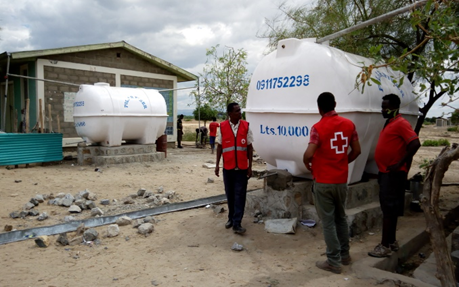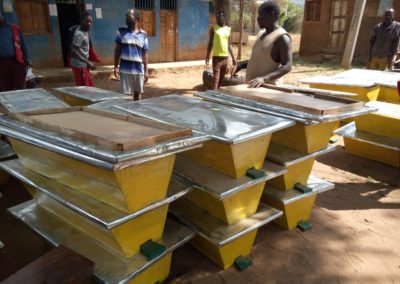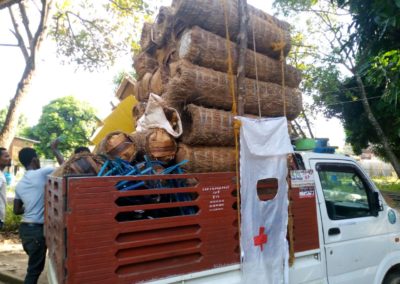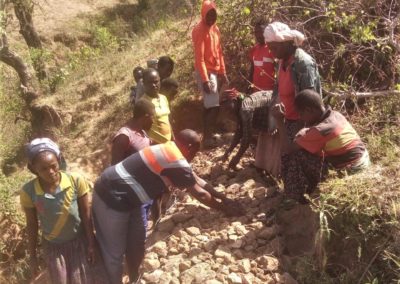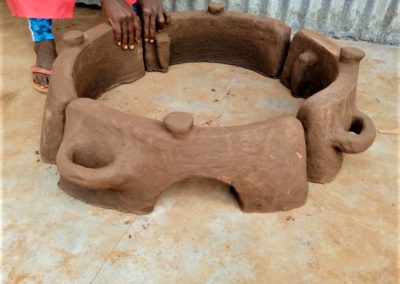South Omo Zone Branch is one of the 4 Branches who were awarded a grant for the implementation of the micro-project developed by them. This article provides a short overview over the background of South Omo Zone as well as the history of the Branch and their experience in implementing WASH projects.
Background about South Omo Zone
South Omo zone is one of the 18 administrative zones in the SNNPRS. In the zone there are 16 indigenous ethnic groups living with other ethnics of the country. It is geographically the widest in the region covering about 23,361 square km. Jinka is the capital town of South Omo zone. Jinka located south west of Addis with total distance of 727 Km and 520 KM from Hawassa, capital of SNNP region.
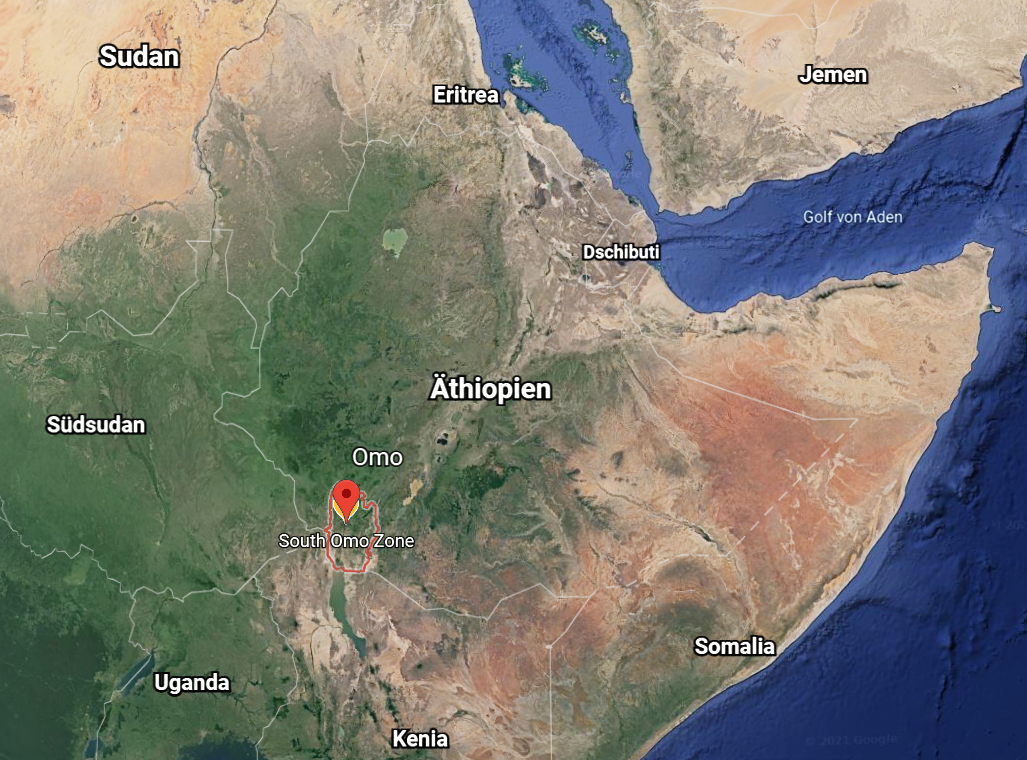
Location of South Omo Zone; source: Google Earth
South Omo zone is bordered on the south by Kenya, on the southwest by the Ilemi Triangle, on the west by Bench Maji, on the northwest by Keffa, on the north by Goffa zone, on the northeast by the Dirashe Special Woreda and Konso zone, and on the east by the Oromia Region. Animal husbandry and agriculture are the main economic sources to zones’ population. The zone comprises 5 pastoralists,1 semi-pastoral 4 agrarian total of 10 rural districts and one Jinka city administration with a total population of 838,707. Majority of the land is arid and semi-arid. Some of the zones’ land covers highlands with high temperature.
History of ERCS South Omo Branch
ERCS South Omo zone branch was established in 1980 E.C with the aim of helping disaster affected people in the zone, especially in pastoral community.
South omo red cross branch has been expanding its services on the provision of essential drug with fair price in Jinka town. In addition to this the branch Improved the access of WASH and Restore livelihood capacities of the pastoral community. Furthermore, the branch is working on keeping environment, it has 11.5 hectares’ two nursery site /coffee and fruit plantation/.
The ERCS-South Omo Zonal Branch Office has its own resources such as, 2 service cars and 2 ambulance vehicles, its own office, 3 desk top computers, 3 laptop computers, 2 printers, 9 administrative staff, 7 supportive staff and 150 volunteers including /professional and leader / with the membership of 22,377.
The branch reaches the vulnerable community as it is working as an auxiliary to the government. The branch has working experience implementing different projects.
South Omo’s experience in WASH
Already before the Skybird Programme started, South Omo Zone Branch was able to collect some experiences with the implementation of WASH projects.
So far, the Branch has implemented the following projects in the field of WASH:
-
- South Omo WatSan Project from June 2013 – July 2014
The goal was the reduction of the incidence/prevalence of water borne and hygiene & sanitation related diseases in South Ari woreda of South Omo Zone through increased access to safe drinking water, application of good hygiene & sanitation practices. The project benefited 1500 HHs and Budgeted 5,864,365.92 ETB, supported by Italian RC. According to this objective appropriate water and sanitation facilities were established, such as 30 hand dug wells, distribution of san plat slabs for 1500 HHs and community volunteers and HEWs trained on hygiene and sanitation.
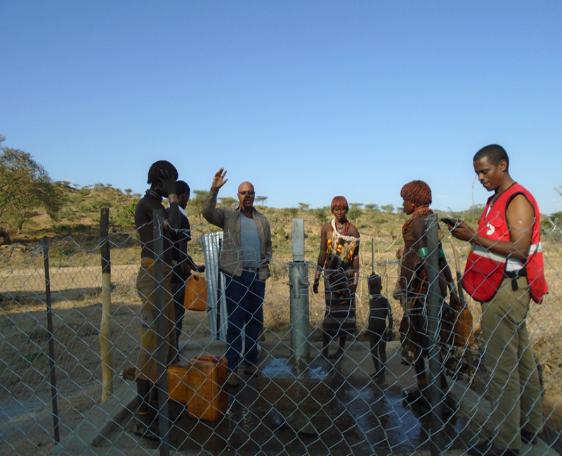
Finished construction of shallow wells in South Omo Zone; Image courtesy of ERCS
2. Emergency WASH and Livelihood project /2018
The project contributed to improved health, the alleviation of suffering and maintaining human dignity of the drought affected population. An additional focus was on improved access to WASH, the restoration of livelihood capacities and strengthening resilience of drought affected households. 4 shallow wells were constructed in four villages, 2.100 goats and fast-growing forage seeds as well as cow peas trees and Moringa trees were purchased and distributed. Further, 30 community volunteers were trained on hygiene and sanitation and 350HHs were trained on livestock reproduction and management.
The project benefited 950 droughts affected HHs (6650 individuals), in Hamer Woreda, Assile Kebele. The project duration was 9 months, (Jan 2018 to Sept 2018) and it was supported by Austrian Red Cross and funded by Austrian Development Corporation.
3. Ethiopia Revised drought appeal 2018 / Nutrition, WASH & Health care, Livelihood
ERCS implemented a focused response targeting specific areas and prioritizing the most urgent needs of the affected population. The major activities included water point rehabilitation and maintenance (5000m cube pond constructed), training ERCS volunteers on screening, registration, and identification of children under-five and PLWs together with the local health bureau, the provision of supplementary food, a school WASH program mobilization (3 schools in each woreda), the distribution of water treatment chemicals 29 sachets for each kebele HH, Hygiene Promotion campaigns in public places and rain water harvesting established in school & the health post.
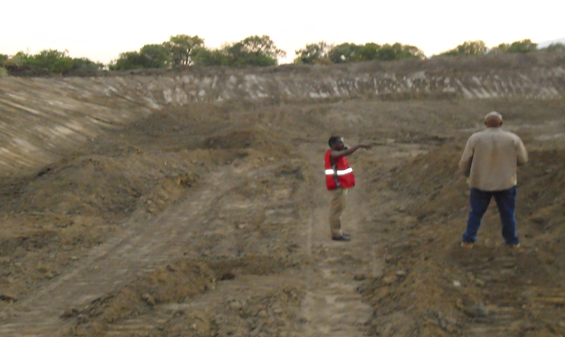
Construction of 5000 m2 pond; image courtesy of ERCS
The project duration was 5 months from April to September 2018. Targeted Beneficiaries: 250,591 people at Hamer and Bena-tsemay district of South Omo Zone, supported by IFRC & other partners.
South Omo Branch in the Skybird Programme
South Omo Zone Branch is got awarded a micro-grant by the Skybird Programme to implement the Kaysa Climate Change Mitigation Project.
The general objective of the project is to contribute and improve livelihoods by establishing cooperatives, performing biological and physical soil and water conservation measures to rehabilitate degraded land and use of improved energy sources for flood affected community in Baka Dawla Ari wereda, South Omo Zone, southern Ethiopia. Several livelihood interventions, such as introduction to traditional and modern beekeeping, production of energy efficient cooking stoves, introduction to sustainable farming techniques and distribution of seeds all aim at improving the economic status of the beneficiaries
